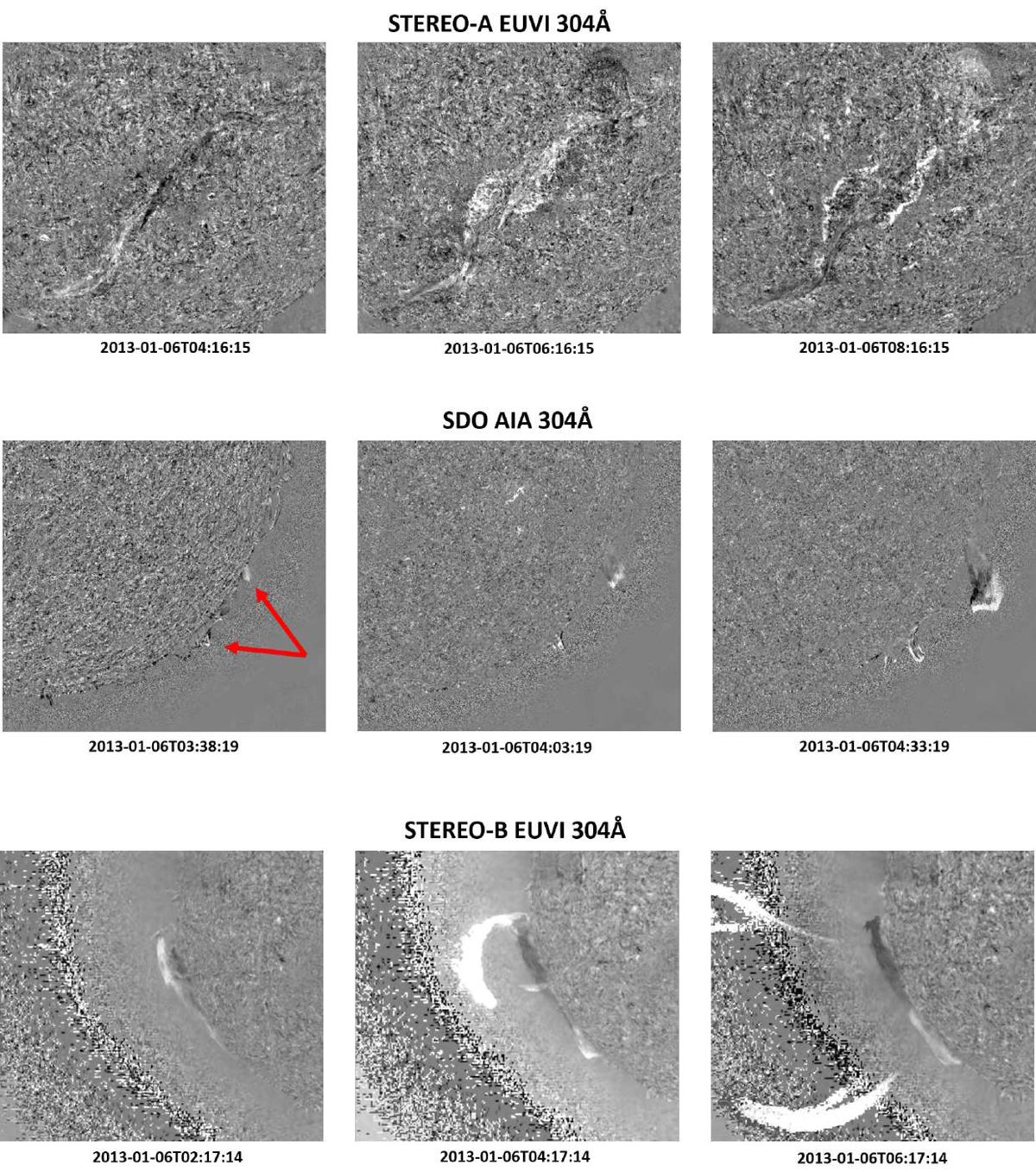Fig. 4.

Running-difference images based on EUV filtergrams at 304 Å from the EUVI instrument on board STEREO-A (top row) and the AIA instrument on board SDO (middle row), and base-difference images using the filtergrams from the EUVI instrument on board STEREO-B (bottom row). The date format in these images is yyyy-mm-ddThh:mm:ss. The images capture the erupting filament as it evolves in the low corona from three vantage points. For STEREO-A, the filament eruption was located in the field of view of EUVI, and so the erupting filament, the footpoints, and the flare ribbons are clearly visible (top row). For SDO and STEREO-B, the eruption appeared at the limb. In the higher-cadence images of the SDO AIA instrument (middle row), the early signatures of the eruption appeared at the limb at around 03:37:43 UT on 2013-01-06 (traces marked with red arrows). These SDO images provide a better estimate of the eruption time. In the STEREO-B field of view, the rising filament material indicative of a flux rope and its legs in the low corona are well captured (bottom row).
Current usage metrics show cumulative count of Article Views (full-text article views including HTML views, PDF and ePub downloads, according to the available data) and Abstracts Views on Vision4Press platform.
Data correspond to usage on the plateform after 2015. The current usage metrics is available 48-96 hours after online publication and is updated daily on week days.
Initial download of the metrics may take a while.


